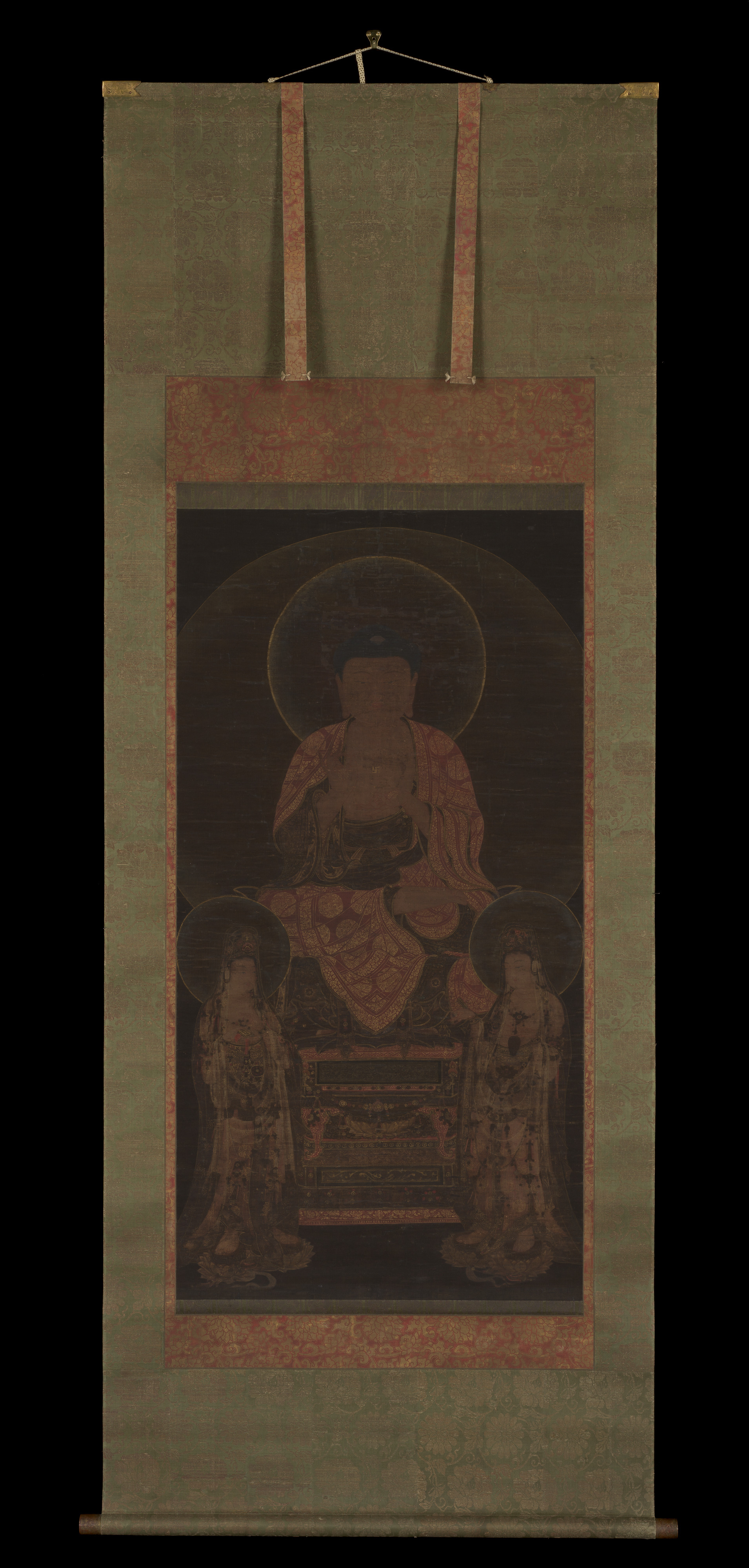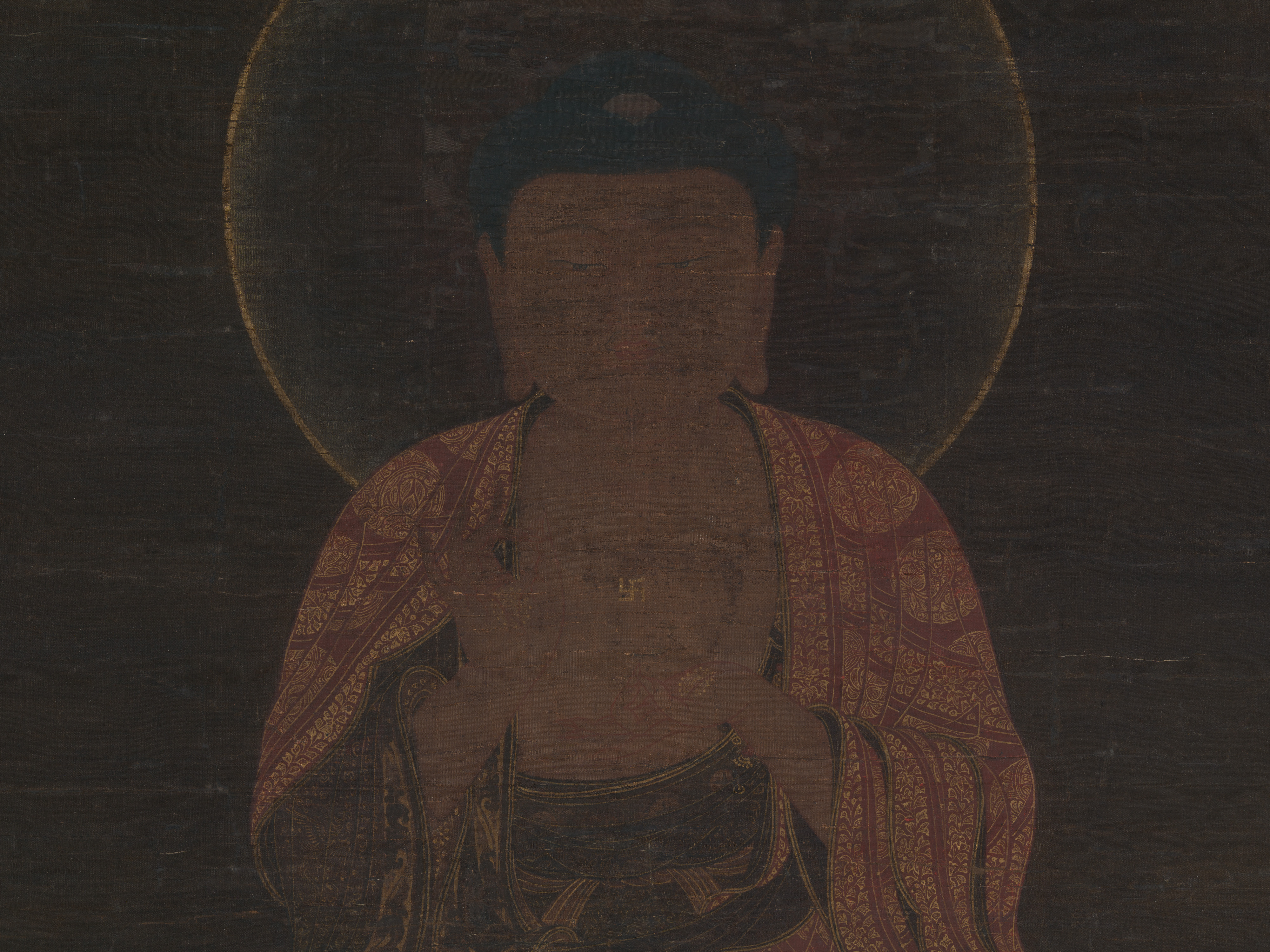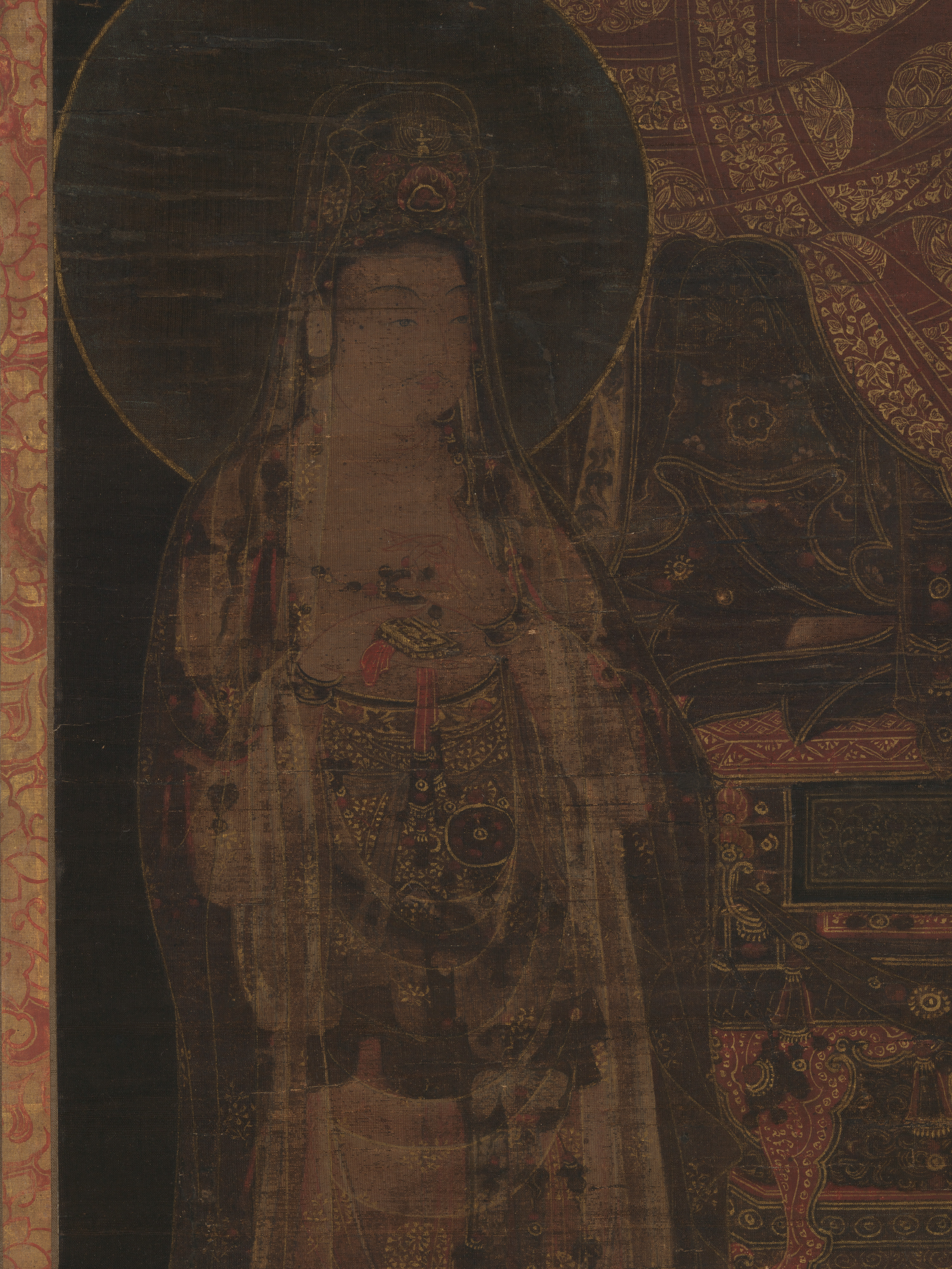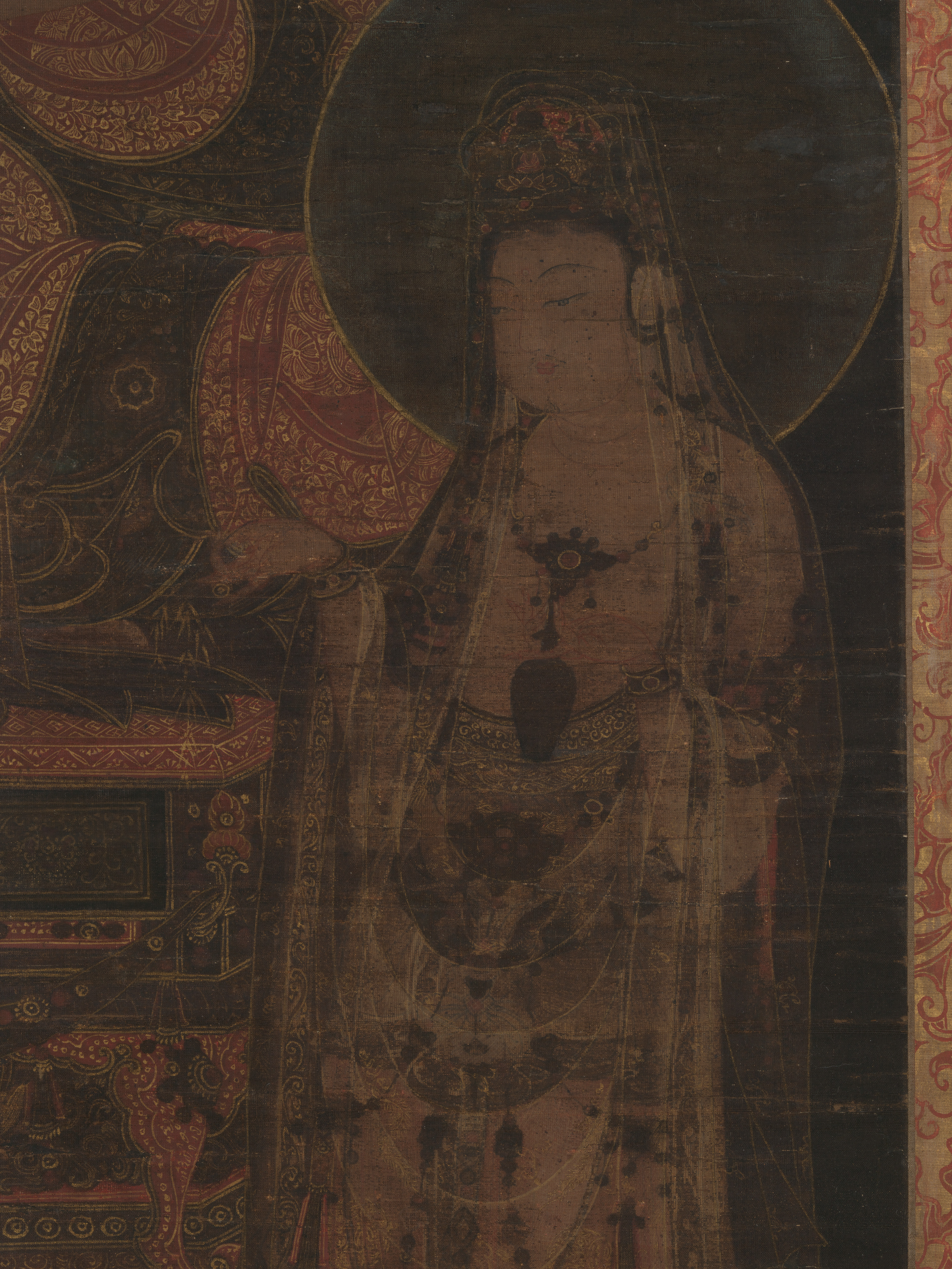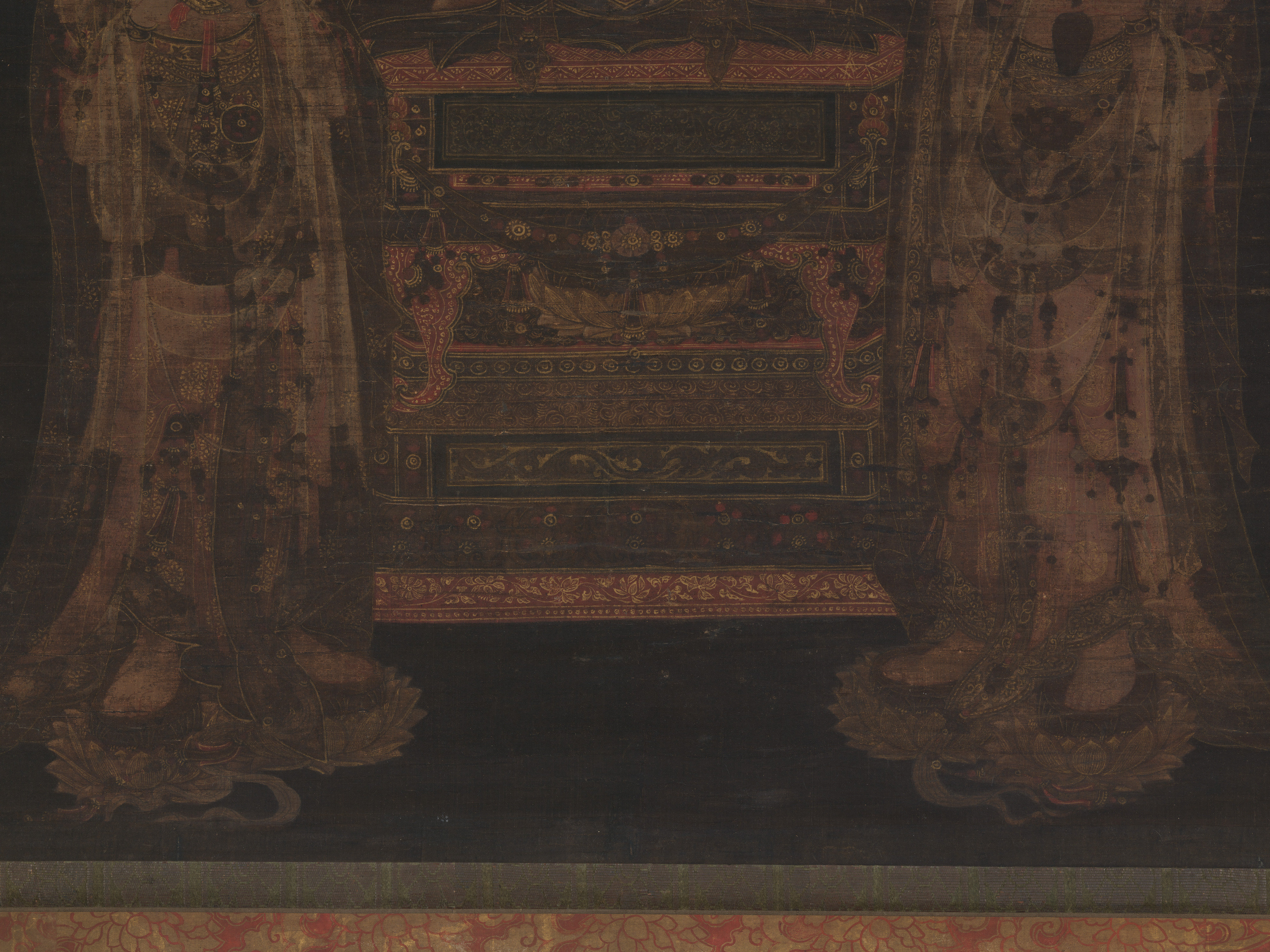Amitabha triad
Not on view
The Amitabha Buddha (Korean: Amita) was the focus of worship in Pure Land Buddhism, which enjoyed great popularity during the Goryeo period. Devotees were promised entrance to Amitabha’s Western Paradise upon recitation of his name. Seated high on an elaborate lotus throne, Amitabha is flanked by two bodhisattvas, Avalokiteshvara (Korean: Gwaneum) on his left and Mahasthamaprapta (Korean: Dae Seji) on his right. The identifying attributes of the former include a miniature image of Amitabha in her crown and a ritual sprinkler, or kundika, in her left hand; the latter can be identified by the kundika in her crown. The Buddha’s hand gesture, or mudra, represents the preaching of Buddhist law. The symbol on his chest, associated with Buddhism, originated in ancient India. The intricately rendered gold decoration on the deities’ robes, particularly in the roundels of the Buddha’s garment, exemplifies the dazzling virtuosity of Goryeo Buddhist painting.
Due to rights restrictions, this image cannot be enlarged, viewed at full screen, or downloaded.
This artwork is meant to be viewed from right to left. Scroll left to view more.


